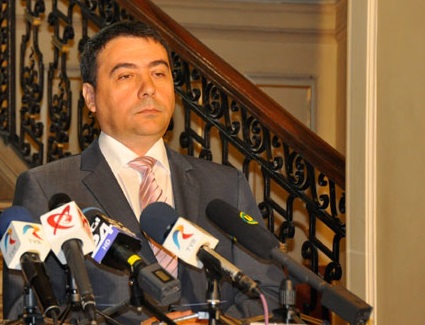Agriculture Minister paints different picture on Romania's land bank for the FT
 Setting up a land bank with first refusal on agricultural land, which could then be leased to young people, might be a way to stop foreigners from buying up agricultural land in Romania, recently said Agriculture Minister Stelian Fuia. But the minister sang quite a different tune when talking to business daily the Financial Times recently. “Local press reports have suggested that [ the land bank ] could be a tactic to limit land ownership by foreigners through giving priority to Romanians. Fuia denies this and says he values the capital, knowledge and technology brought by foreign investors,” writes Andrew MacDowall on an FT blog.
Setting up a land bank with first refusal on agricultural land, which could then be leased to young people, might be a way to stop foreigners from buying up agricultural land in Romania, recently said Agriculture Minister Stelian Fuia. But the minister sang quite a different tune when talking to business daily the Financial Times recently. “Local press reports have suggested that [ the land bank ] could be a tactic to limit land ownership by foreigners through giving priority to Romanians. Fuia denies this and says he values the capital, knowledge and technology brought by foreign investors,” writes Andrew MacDowall on an FT blog.
Although a land bank to help young Romanians get a foothold in the agriculture sector and inviting foreign direct investment to boost Romanian farming are not necessarily mutually exclusive ideas, Fuia's comments show a certain slipperiness and call into question where the government truly stands on the ownership of farmland, after EU laws allowing non Romanians to buy land in the country directly come into force next year.
Like tourism, agriculture in Romania provokes many 'untapped potential' comments from business people, the media and politicians. The “bumper 2011 harvest confirms the country’s position as one of Europe’s leading agricultural producers,” writes MacDowall for FT. But bumper harvests aside, and despite higher yields from last year's harvest, Romania's agricultural productivity still has a lot of room to grow, according to MacDowall.
Quoting sources from the local media, BCR and government, the FT tells a now familiar unrealized potential story: Yields per hectare have risen, but are still low compared to elsewhere in EU, some farming funding from the EU absorbed, but a lot more available with a 2015 sell by date. “Productivity remains low due to a lack of investment in things like machinery and irrigation, a small skills base and fragmented land, in which many still operate as subsistence farmers and more produce only small surpluses. Subsidies have helped the sector’s revival but they remain low by European standards, at around EUR 120-140 per hectare,” writes FT, referring to a BCR report.
Read the FT article here. More from Romania-Insider on the land bank here.
Liam Lever, liam@romania-insider.com











